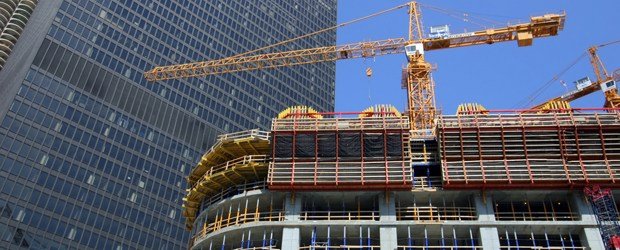In the dynamic world of commercial construction, few things ripple through the industry like changes in interest rates. As we move through 2025, one thing is clear: rising interest rates are reshaping how deals are structured, funded, and negotiated. Whether you’re a seasoned developer, an investor looking to break ground, or a business owner aiming to expand, understanding how lenders navigate this new landscape is crucial.
Commercial construction lending is a specialized field that involves financing the development or expansion of commercial properties, such as office buildings, industrial complexes, retail centers, multi-family housing, and more. These deals often require large sums, long timelines, and significant risk. That’s why lenders in this space, such as banks, credit unions, private money lenders, and debt funds, assess every angle before approving a loan.
But in 2025, the lending environment is evolving quickly. Interest rates have risen considerably from the past decade’s ultra-low levels, creating new challenges and opportunities for borrowers and lenders alike. Let’s break down what this means, how lenders adjust, and what you need to know to navigate your next commercial construction deal.
The Role of Commercial Construction Lenders
Commercial construction lenders play a vital role in real estate development. They provide the capital needed to turn blueprints into bustling commercial hubs. But unlike standard mortgages or business loans, construction loans are disbursed in stages as various phases of the project are completed.
These loans are typically short-term (12 to 36 months) and often convert into permanent financing once construction wraps up. They’re high-risk and high-reward, which is why lenders look closely at:
- Project feasibility
- Developer experience
- Market demand
- Appraised property value (post-construction)
- Exit strategy (e.g., refinance, sale, lease-up)
In 2025, rising rates have changed how each factor is weighed.
How Rising Interest Rates Are Affecting Loan Structures
Let’s face it, borrowing is no longer cheap. Commercial loan interest rates have risen as central banks increased rates to curb inflation over the past couple of years. What used to be a 4-6% construction loan in 2020 may now range from 8-10% or even higher for riskier deals.
This uptick is impacting deal structures in several key ways:
1. Higher Debt Service Coverage Requirements
Lenders are tightening the screws. With higher interest payments, they’re demanding stronger cash flow projections and more conservative financials. Developers are expected to show a higher debt service coverage ratio (DSCR), which means more pressure on rents, occupancy, or sales.
2. Increased Equity Requirements
Lenders often ask borrowers to put in more equity to reduce their own exposure. In 2025, it’s common to see loan-to-cost (LTC) ratios of 60-70%, down from 75-80% in previous years. This means borrowers need more skin in the game, either from their own funds or equity investors.
3. Interest Rate Hedging or Caps
Floating interest rates are the norm for construction loans, but the uncertainty around future hikes has made interest rate hedging a hot topic. Some lenders now require borrowers to purchase interest rate caps or swaps to protect both parties against further rate volatility.
4. Shorter Terms with Faster Timelines
Many lenders are issuing shorter-term loans and pushing for more aggressive construction timelines to mitigate long-term exposure to a rising-rate environment. Delays can be costly, both in interest and in missed market timing.
The Impact on Developers and Investors
The rate hikes are not just theoretical; they’re changing the real-world behavior of developers and investors:
- Feasibility Studies Are More Crucial Than Ever: With higher carrying costs, projects that looked profitable two years ago might now be underwater. Developers lean heavily on market analysts and consultants to ensure their projects can withstand higher financing costs.
- Rising Costs Meet Rising Rates: Material and labor costs have also increased. With higher borrowing costs, some developers are scaling down projects, phasing construction, or pausing altogether until conditions stabilize.
- Smaller Projects Are Gaining Ground: Mid-size and adaptive reuse projects are gaining popularity as large-scale developments become harder to finance. These often have shorter timelines and lower capital needs, making them more manageable in today’s lending climate.
How Lenders Are Adapting in 2025
Lenders aren’t just sitting back and saying no. Many are adjusting their offerings to stay competitive and still support viable projects:
1. More Collaboration Between Banks and Private Lenders
Banks, constrained by regulations and risk profiles, are teaming up with private lenders, mezzanine lenders, and debt funds to get deals done. This creates hybrid financing structures where each party takes on a portion of the risk.
2. Increased Use of Bridge Loans and Mezzanine Financing
Developers are turning to bridge loans and mezzanine financing to pencil out deals. These tools help fill funding gaps when primary loans fall short due to lower LTC or LTV limits.
3. Niche Lending Programs for Green and Sustainable Builds
There’s a growing appetite for financing sustainable and energy-efficient buildings. Some lenders offer preferential rates or flexible terms for green-certified developments, which can also help developers meet local zoning and incentive requirements.
4. Tech-Driven Underwriting and Risk Assessment
Lenders are using data analytics, AI, and market forecasting tools to assess project viability more accurately and swiftly. This is helping them underwrite risk more precisely in a rapidly shifting market.
What Borrowers Should Do in 2025
Navigating commercial construction loans in 2025 requires strategy, preparation, and resilience. Here’s what borrowers should keep in mind:
- Start Planning Early: In this lending climate, you’ll need more time for everything: approvals, appraisals, underwriting, and closing.
- Strengthen Your Team: Lenders are betting on people as much as numbers. An experienced developer, contractor, and project manager can instill confidence.
- Show a Solid Exit Strategy: Whether it’s refinancing into a long-term mortgage, selling the asset, or achieving stable cash flow from tenants, lenders want clarity on how the loan will be paid back.
- Consider Multiple Lending Sources: Don’t rely on one lender. In 2025, a blended financing approach may be the only way to make your deal work.
- Keep an Eye on Rate Trends: While rates are high, forecasts vary. Some analysts predict stabilization or slight declines later in 2025, while others expect continued volatility. Timing can make or break a project.
Conclusion: Navigating the Lending Landscape in 2025 with BridgeWell Capital, LLC
In a world of rising interest rates, navigating commercial construction lending requires strategy, flexibility, and the right lending partner. Today’s lending environment demands more from borrowers; more equity, more preparation, and more transparency. But there are still great opportunities for those who understand the game and know how to play it well.
Whether you’re working with commercial construction lenders on a new office complex or evaluating private commercial mortgage lenders for a time-sensitive multifamily deal, the key is to align with a lender who understands your vision and can help you adapt to market conditions.
BridgeWell Capital, LLC stands out among today’s top commercial loan providers if you’re seeking reliability, speed, and industry expertise. The team is dedicated to helping real estate investors and developers secure the funding they need, even in today’s complex environment. With fast closings, flexible terms, and no unnecessary red tape, BridgeWell Capital remains a preferred choice for builders who can’t afford to waste time.
Their services include funding for new construction projects, fix-and-flip ventures, rental property acquisitions, bridge loans for transitional needs, and even specialized solutions like rehab and renovation loans, cash-out refinance opportunities, and gap funding for deals that need an extra push. Their team works closely with clients to ensure each deal is set up for success from day one.
In 2025, the rules may be changing, but the opportunity is still there. With a lender like BridgeWell Capital in your corner, you can face the future of commercial construction lending with confidence and build smarter, even in a high-rate world.

